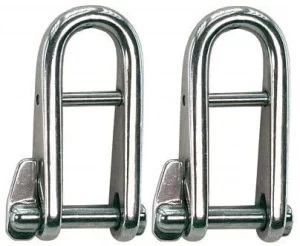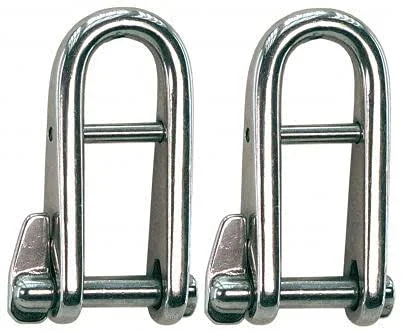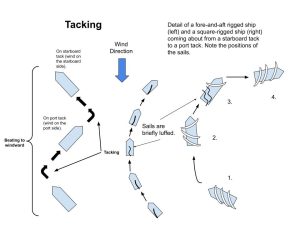Let’s delve into the world of nautical rigging with our friendly and enlightening guide to the functional nuances of a halyard shackle. Lifelines in maritime environments, halyard shackles earn their keep by connecting ropes, wires, or chains on naval vessels. Their versatility is awe-inspiring, serving a plethora of vital functions in various sailing scenarios. Join us as we navigate the inner workings and hidden depths of these unassuming maritime marvels, learning how your sailing experience can be enhanced by leveraging the full potential of halyard shackles. Hop on board and prepare for an intriguing exploration! How many times have you found yourself staring at a halyard shackle, perplexed about its intricate details? Are you still grasping at the functionalities and nuances of this staple sailing equipment? If yes, then get ready for an enlightening dive into the world of halyard shackles.
Understanding the Halyard Shackle
A halyard shackle has an important role in the sailing environment. It is a small, hardworking component that can greatly influence the success of your boating adventures. But exactly what is a halyard shackle, you might ask?
A halyard shackle is essentially a link connecting the halyard – a type of rope used for hoisting sails, flags, or yards – with the sail. This small and yet incredibly powerful piece of equipment can withstand enormous loads, facilitate quick adjustments, and contribute to the overall safety on your boat.
Types of Halyard Shackles
Before moving on, it’s important for you to understand that halyard shackles come in several types, each with a unique design and purpose. The main types of halyard shackles include:
- The D-Shackle : A very common type, D-shackles are known for their strength and reliable performance. Their simple, no-nonsense design ensures durability and long-lasting functionality.
- The Snap Shackle : These types of shackles are popular for their easy-to-use mechanism. A snap shackle can be released quickly, even under load, making it great for dynamic sailing situations.
- The Key Pin Shackle: Key pin shackles are uniquely designed for situations where you wouldn’t want the pin to come out completely. The pin is connected to the shackle’s body, making it less likely to be lost.
Now that you have a fundamental understanding of the diverse types of halyard shackles, it’s important to dive a bit deeper and understand the fine yet important differences among these varieties.
Distinguishing Features of Halyard Shackles
The Design Parameters
Halyard shackles, despite their seemingly simple structure, are actually intricately designed pieces of engineering. The design parameters include the shackle’s body length and width, pin diameter, inner and outer dimensions, and load capacity, amongst others. These parameters can significantly influence the shackle’s performance.
Material Composition
Another critical factor to consider when looking at halyard shackles is their material composition. Most are crafted from stainless steel or galvanized metal for corrosion resistance and strength. However, you may also find shackles made from high-strength aluminum or composite materials for specific applications.

The Functionality of a Halyard Shackle
Under all that tough exterior and complex design, the core purpose of a halyard shackle remains pretty simple – to safely and efficiently connect the halyard with the sail. However, depending on their types, different halyard shackles provide varying functional advantages.
Quick Release
Widely seen in snap shackles, the quick-release function is a game-changer in time-sensitive and demanding situations. This type of shackle allows a swift release, even under load. The ability to quickly disconnect in times of high wind or other challenging conditions can be critical.
Load Capacity and Strength
Perhaps one of the most important roles of a halyard shackle is its ability to handle large loads. You must always check the load capacity of a shackle before using it. Overloading a shackle can lead to failure, causing dangerous situations. Remember, safety always comes first!
Maintaining Your Halyard Shackle
It’s not just about understanding the features and functions of your halyard shackle, but also about knowing how to maintain it properly.
Regular Inspection
Regular inspection of your halyard shackle is advised to ensure it remains in optimal condition. Look for signs of wear and tear, such as corrosion, cracks, or distortion. Pay special attention to the pin, as any damage here can cause the shackle to open unsafely.
Correct Usage
Misuse of the halyard shackle can lead to premature wear or failure. Ensure you’re using the shackle within its load limits and that it’s correctly attached to the halyard and sail.
Cleaning and Lubrication
Keep your shackle clean of dirt and salt residue, which can promote corrosion. Regular lubrication can help keep the shackle’s moving parts functioning smoothly and extend its lifespan.
And that’s all there is to the halyard shackle. By now, you should have a good grasp of the functional nuances of this essential piece of sailing equipment. Armed with this knowledge, you can better choose, use, and care for your halyard shackles, thereby enhancing your sailing experience and ensuring your safety out on the waters.





